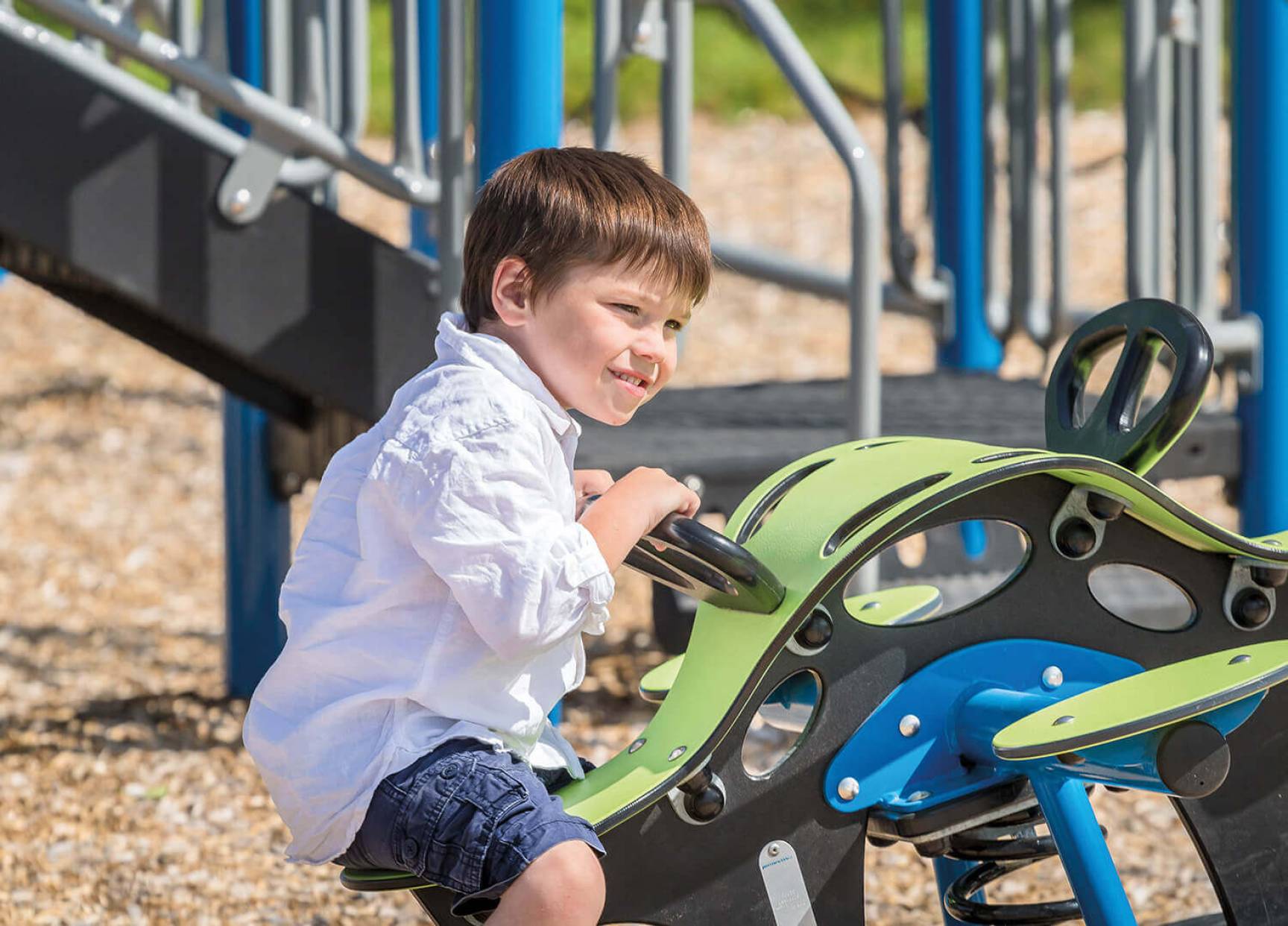Category Learning

10 Jambette playground equipment that promote motor skills
Gross motor skills include larger movements of the entire body. They correspond to 80% of a human being’s motor and sensory functions and are broken down into three subsets, moving (running, crawling, climbing, jumping, etc.), stationary (turning, pirouetting, pushing, sitting, getting up, etc.) and postural (balancing, swinging, walking on a balance beam, etc.)
October 14, 2016
• By Claudia Carrier • Learning
Read time: 2 minutes

Developing children's creativity through Jambette's playground equipment!
Everyone plays, even adults. People are forever learning and building on their achievements, and everyone is creative in their own way! Adults who have already learned language concepts even enjoy playing with words. This type of play is an integral part of human creativity.
October 14, 2016
• By Claudia Carrier • Learning
Read time: 2 minutes

Promoting the child's social and moral development through play
Through relationships developed by the child during play, he learns to recognize his strengths and weaknesses, natural behaviours and social skills.
October 17, 2016
• By Claudia Carrier • Learning
Read time: 2 minutes

Encouraging unstructured outdoor play
Unstructured outdoor play contributes even more to the full development of children abilities.
October 17, 2016
• By Claudia Carrier • Learning
Read time: 2 minutes

How Jambette playground structures allow a genuine exploration of self and others
Through different kinds of play, the child forges his identity, sets boundaries between others and himself, and begins to recognize his qualities and shortcomings.
October 17, 2016
• By Claudia Carrier • Learning
Read time: 2 minutes

Communication, a form of intelligence that can be learned through play
By playing with his peers, the child learns about communication. He must express his likes, his dislikes, how he views play time, etc. When very young, his communication is non-verbal, but as he grows older, he becomes comfortable with verbal communication.
October 17, 2016
• By Claudia Carrier • Learning
Read time: 2 minutes

The role of The CRAFT Table in fostering the child's SELF-ESTEEM
The CRAFT Table enables the creation of emotional ties between children When the little ones sit side by side, they create emotional ties characterized by gentle and joyful emotions.
October 17, 2016
• By Claudia Carrier • Learning
Read time: 2 minutes

Jambette's themed playgrounds and the concept of morality in children
In the midst of all this learning about relationships, negotiation and potential conflict resolution, the child begins to gain a clearer understanding of the concepts of right and wrong, and of respect.
October 17, 2016
• By Claudia Carrier • Learning
Read time: 2 minutes

Jambette's role in helping children form emotional bonds
Unstructured outdoor play is great for healthy emotional development. The child has more freedom to meet other children his own age and interact with them. The child is automatically exposed to his own emotions and those expressed by others.
October 17, 2016
• By Claudia Carrier • Learning
Read time: 2 minutes

Jambette playground equipment, A FANTASTIC FOUNDATION FOR SCHOOL !
Did you know that play makes academic learning more accessible ? First, the child will have mastered his language, improved his vocabulary and enriched his ability to communicate.
October 17, 2016
• By Claudia Carrier • Learning
Read time: 2 minutes

Social Values at the Playground
Did you know that Personality development, lessons in negotiation and respect, adoption of a moral compass, etc., are even more present in unstructured play outdoors ? Why? With less supervision and more latitude outdoors than indoors playing a seated game, the child can experiment more openly with direct face-to-face interaction.
October 17, 2016
• By Claudia Carrier • Learning
Read time: 2 minutes

The importance of play in learning to compromise
Relating and negotiating go hand in hand. As the child builds his identity and understands others’ differences, he learns to compromise. He discovers and acknowledges a teammate’s position, presents his views and tries to reach a possible agreement.
October 17, 2016
• By Claudia Carrier • Learning
Read time: 1 minute